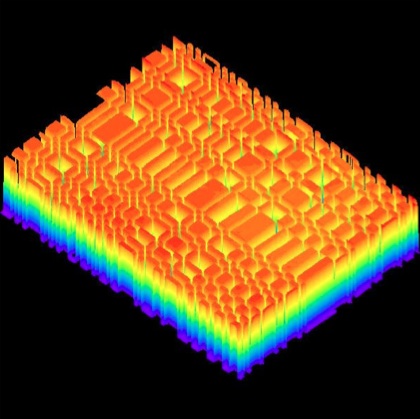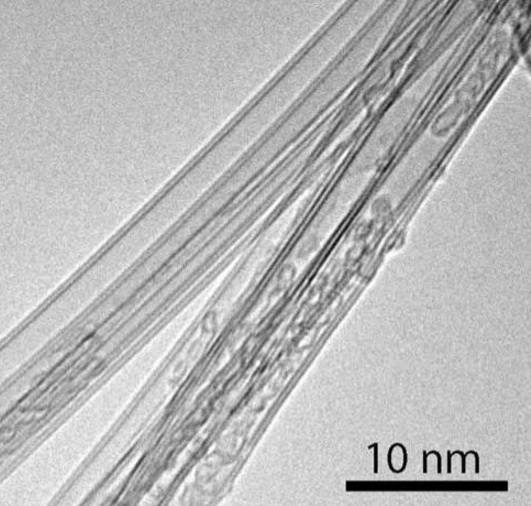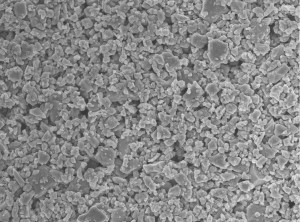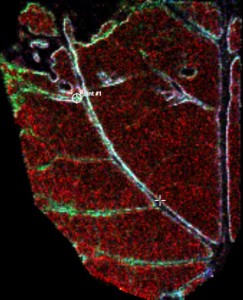The U.S. Department of Energy (DOE)’s Lawrence Berkeley National Laboratory (Berkeley Lab) has won seven 2015 R&D 100 awards. This year’s winners include a high-capacity anode for rechargeable batteries, a technique to synthesize the lightest, strongest material ever made, and a new way to analyze and visualize mass spectrometry data.
The technologies may lead to advances in healthcare, transportation, and energy production, to name a few possible applications.
Presented by R&D Magazine, the R&D 100 Awards recognize the year’s top 100 technology products from industry, academia, and government-sponsored research, ranging from chemistry to materials to biomedical breakthroughs. Go here to see all of the winners. The seven awards this year brings the total of Berkeley Lab’s R&D 100 wins to 80, plus two Editors’ Choice Awards.
A brief description of the winners follows:
Binary Pseudo-Random Calibration Tool
This new metrological technology can be used for calibrations of a broad range of optical instruments, including those used for extreme ultraviolet lithography and high-precision visible light optics. Metrology is a multi-billion dollar industry that is an indispensable part of science and manufacturing.
The technology applies a variety of test samples and analytical methods to the evaluation and calibration of advanced metrology instrumentation with resolution from millimeters and down to nanometers. It solves one of the most difficult problems in metrology techniques: the quantitative characterization of the imaging instrumentation, including all the instruments and techniques listed above. The calibration technology has already found several applications at national laboratories. Valeriy Yashchuk and Wayne McKinney of Berkeley Lab’s Advanced Light Source, and Stefano Cabrini of the Molecular Foundry, led the development of the technology with scientists from Argonne and Brookhaven National Laboratories, and ABeam Technologies, Inc.
Continuous Active-Source Seismic Monitoring (CASSM)
CASSM is a combination of experimental methodology, geometry, and instrumentation enabling virtually continuous monitoring of subsurface seismic properties within a defined area (hundreds of square meters). Subsurface engineering methods such as geologic carbon sequestration and enhanced oil recovery require monitoring, typically seismic monitoring, to verify liquid or gas location and containment.
Applications utilizing crosswell geometry have allowed CASSM to achieve a measurement precision far beyond previous field-scale experiments. Unlike the “snapshots” provided by present time-lapse imaging methods, CASSM’s continuous monitoring produces real-time information, capturing fast processes and short events often missed by present methods. Also, because CASSM can be operated while fluid is being injected into and withdrawn from a well, it eliminates the substantial labor costs and inefficiencies resulting from switching wells between borehole monitoring and production. The technology was developed by Thomas Daley, Jonathan Ajo-Franklin, and Ernest Majer of Berkeley Lab’s Earth and Environmental Sciences Area.
Extended Pressure Inductive Coupled Plasma-synthesized Boron Nitride Nanotubes (EPIC BNNTs)
This technology represents a new synthesis method, called extended pressure inductively-coupled plasma system (EPIC), which enables continuous production of Boron Nitride Nanotubes (BNNTs). EPIC BNNTs are the lightest, strongest material ever made. Furthermore, EPIC BNNTs have chemical and thermal stability greater than that of carbon fiber, which will enable their use in metal and ceramics matrix composites for ultra high toughness and fracture resistance alloys and high performance ceramics.
A constraint that has severely limited the scientific study and industrial application of BNNTs is the lack of availability of the synthesized materials. This new technology demonstrates a high-throughput, scalable BN nanostructures synthesis process in which precursor materials are directly and continuously injected into a high-temperature, extended pressure inductively coupled plasma system. The system can be operated in a near-continuous fashion and thus far has achieved a record output of over 35 grams per hour for pure, small diameter, highly crystalline BNNTs. A team led by Alex Zettl of the Materials Sciences Division developed the technology.
High-capacity Anode for Rechargeable Batteries
The Berkeley Lab and Zeptor Corporation team have moved Berkeley Lab’s R&D 100 award-winning high-capacity anode from technology to product—incorporating the technology into a high-capacity rechargeable battery that can double the lifespan of a state-of-the-art lithium-ion battery and increases capacity by 40 percent. This technology uniquely enables the practical, economical, and commercial use of silicon in an anode—ushering in the long-awaited shift from low-capacity graphite anodes to high-capacity silicon ones.
At pilot scale, the technology is being tested now with initial results showing higher capacity, longer lifespan, significantly improved safety, and lower costs than state-of-the-art battery technologies. The Berkeley Lab and Zeptor team is also working with car manufacturers to improve the performance of their lithium-ion batteries for electric vehicles. The car manufacturers plan to use the high-energy density battery in their next generation EVs. Gao Liu of Berkeley Lab’s Energy Storage & Distributed Resources Division led the development of the technology.
OpenMSI
OpenMSI is the most advanced tool for analyzing and visualizing mass spectrometry instruments (MSI) data that is available via web-browser. MSI technology enables scientists to study tissues, cell cultures, and bacterial colonies in unprecedented detail at the molecular level. As the mass and spatial resolution of MS instruments increase, so do the number of pixels in MS images and data size. Nowadays, MSI datasets range from tens of gigabytes to several terabytes. Thus, basic tasks like opening a file or plotting spectra and ion images become insurmountable challenges.
OpenMSI overcomes these obstacles by making highly optimized computing technologies available via a user-friendly interface. Because OpenMSI leverages NERSC’s resources to process, analyze, store, and serve massive MSI datasets, users can now work on their data at full-resolution and in real-time without any special hardware or software. They can also access their data on any device with an internet connection.
With OpenMSI, one user was able to visualize and analyze 50-gigabyte dataset that she had collected 1.5 years earlier but hadn’t been able to access. Now, the user can view ion images, examine underlying spectra, and share data and analyses with collaborators. Ben Bowen of the Environmental Genomics and Systems Biology Division and Oliver Rübel of the Computational Research Division led the development of the technology.
Sensor Integrated with Recombinant and Engineered Nanophage (SIREN) platform
This technology employs bio-nanofilms with tunable functionality to create portable devices for detecting small molecules of interest. This is achieved by leveraging genetic engineering and molecular recognition concepts. The bio-mimetic manufacturing of these films is inspired by nature; turkey skin-like collagen-bundled nanostructures that change color as they are exposed to certain molecules. This invention is also a breakthrough in the concept of nano-manufacturing, as it exploits the unique and natural ability of the Bacteriophage to synthesize materials in a self-replicating manner and produce responsive structural color films through a self-assembly process.
This technology addresses a key market gap in the gas sensor, detector, and analyzer industry. It provides a sensitive, selective, cost-effective, non-toxic, and easy-to-use sensor platform for applications ranging from environmental protection, security, and health. Seung-Wuk Lee of the Biological Systems and Engineering Division led the development of the technology.
V2G-Sim (Vehicle-to-Grid Simulator)
V2G-Sim quantifies second-by-second energy use for any number of different plug-in electric vehicles (PEVs) while driving under varying driving conditions, or while charging. With V2G-Sim, stakeholders in the electricity grid industry, automobile industry, and policy and regulatory sectors can predict how different vehicles will perform for different drivers, and how different vehicles will interact with the electricity grid.
Grid operators can use V2G-Sim to forecast the amount of electricity demand for any time interval throughout the day, and to notify power generators of how much electricity to produce. V2G-Sim will also help industry and policy stakeholders better understand how electric vehicles can integrate renewable energy sources, such as wind and solar, with the electricity grid by storing excess energy produced during windy or sunny periods, or providing energy back to the grid during peak hours. Samveg Saxena and Jason MacDonald of Berkeley Lab’s Energy Technologies Area led the development of the technology.
# # #
Lawrence Berkeley National Laboratory addresses the world’s most urgent scientific challenges by advancing sustainable energy, protecting human health, creating new materials, and revealing the origin and fate of the universe. Founded in 1931, Berkeley Lab’s scientific expertise has been recognized with 13 Nobel prizes. The University of California manages Berkeley Lab for the U.S. Department of Energy’s Office of Science. For more, visit www.lbl.gov.
DOE’s Office of Science is the single largest supporter of basic research in the physical sciences in the United States, and is working to address some of the most pressing challenges of our time. For more information, please visit science.energy.gov.





